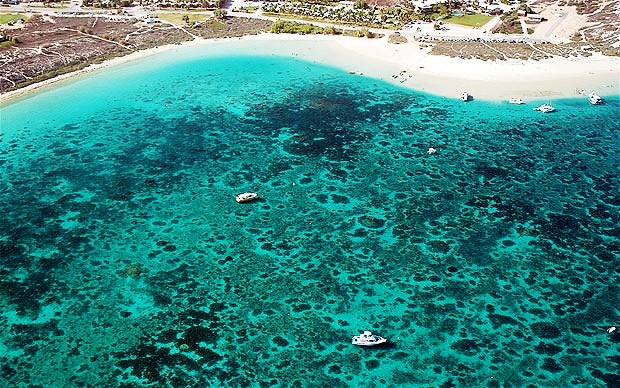The Ningaloo Coast is located on Western Australia‘s remote coast along the East Indian Ocean. The interconnected ocean and arid coast form aesthetically striking landscapes and seascapes. The coastal waters host a major near shore reef system and a directly adjacent limestone karst system and associated habitats and species along an arid coastline.

The property holds a high level of terrestrial species endemism and high marine species diversity and abundance. An estimated 300 to 500 whale sharks aggregate annually coinciding with mass coral spawning events and seasonal localized increases in productivity. The marine portion of the nomination contains a high diversity of habitats that includes lagoon, reef, open ocean, the continental slope and the continental shelf.
Intertidal systems such as rocky shores, sandy beaches, estuaries, and mangroves are also found within the property. The most dominant marine habitat is the Ningaloo reef, which sustains both tropical and temperate marine fauna and flora, including marine reptiles and mammals.
The main terrestrial feature of the Ningaloo Coast is the extensive karst system and network of underground caves and water courses of the Cape Range. The karst system includes hundreds of separate features such as caves, dolines and subterranean water bodies and supports a rich diversity of highly specialized subterranean species. Above ground, the Cape Range Peninsula belongs to an arid ecoregion recognized for its high levels of species richness and endemism, particularly for birds and reptiles.
The landscapes and seascapes of the property are comprised of mostly intact and large-scale marine, coastal and terrestrial environments. The lush and colourful underwater scenery provides a stark and spectacular contrast with the arid and rugged land. The property supports rare and large aggregations of whale sharks (Rhincodon typus) along with important aggregations of other fish species and marine mammals.
The aggregations in Ningaloo following the mass coral spawning and seasonal nutrient upwelling cause a peak in productivity that leads approximately 300-500 whale sharks to gather, making this the largest documented aggregation in the world.
In addition to the remarkable aggregations of whale sharks the Ningaloo Reef harbours a high marine diversity of more than 300 documented coral species, over 700 reef fish species, roughly 650 mollusc species, as well as around 600 crustacean species and more than 1,000 species of marine algae. The high numbers of 155 sponge species and 25 new species of echinoderms add to the significance of the area.
On the ecotone, between tropical and temperate waters, the Ningaloo Coast hosts an unusual diversity of marine turtle species with an estimated 10,000 nests deposited along the coast annually.
The majority of subterranean species on land, including aquatic species in the flooded caves are rare, taxonomically diverse and not found elsewhere in the southern hemisphere. The combination of relict rainforest fauna and small fully aquatic invertebrates within the same cave system is exceptional.
The subterranean fauna of the peninsula is highly diverse and has the highest cave fauna (troglomorphic) diversity in Australia and one of the highest in the world. Above ground, the diversity of reptiles and vascular plants in the drylands is likewise noteworthy.

